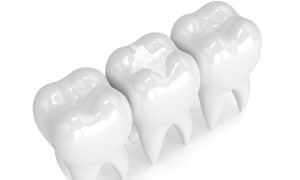 When it comes to your dental health, prevention is always the best medicine, but when it fails, the way in which you address any problems that develop will have a lasting impact on your long-term oral health. While prevention is best, natural, minimally invasive and biocompatible treatment is second-best. That’s why we utilize tooth-colored fillings when treating most mild to moderate cavities. In addition to looking more like your natural tooth structure, biocompatible tooth-fillings also do a lot more for your tooth’s health and integrity.
When it comes to your dental health, prevention is always the best medicine, but when it fails, the way in which you address any problems that develop will have a lasting impact on your long-term oral health. While prevention is best, natural, minimally invasive and biocompatible treatment is second-best. That’s why we utilize tooth-colored fillings when treating most mild to moderate cavities. In addition to looking more like your natural tooth structure, biocompatible tooth-fillings also do a lot more for your tooth’s health and integrity.
Their more natural appearance
The appearance of a biocompatible filling, often referred to as a tooth-colored filling, is the one of the most obvious ways in which it mimics your healthy tooth structure. Tooth-colored fillings are made from a composite resin that consists of finely ground acrylic and quartz-like particles. This makes it highly customizable, with the ability to be tinted to match your specific tooth color and shade. Once placed, the filling will blend in discreetly with the healthy, natural tooth structure around it, making it virtually invisible to other people when you speak or smile.
Their interaction with your tooth structure
The way traditional metal fillings leave an obvious impression on your smile’s appearance is only one of the concerns that often come with the more traditional restorations. For example, because they’re made from metal, the fillings can’t always be used for patients, especially if they have metal allergies or are pregnant. Also, metal has a tendency to create more friction against the opposing tooth structure when you bite and chew, and potentially, it can change shape over time. By contrast, resin fillings are made to interact much more favorably with your tooth structure, bonding to it securely and retaining its shape long after it’s been placed. Resin also produces minimal friction against your tooth structure to reduce the risks of excessive wear on the opposing tooth.
Their long-term protective abilities
The point of a filling is to treat a cavity and stop it from growing worse, and this takes diligence after the cavity has been treated. The part of the tooth affected by the cavity will no longer be protected by the tooth’s enamel. Therefore, it can be easily susceptible to infection again if exposed to more harmful oral bacteria. Composite, tooth-colored resin helps prevent this by bonding securely to the tooth structure and precisely conforming to the shape of the cavity. With its more biocompatible nature, a tooth-colored filling can reduce your risks of needing more extensive treatment, like root canal therapy, for the same tooth in the future.
Learn more about biocompatible tooth fillings
When it comes to your tooth filling, biocompatibility means more than just matching your tooth’s natural appearance. To learn more, schedule an appointment with Dr. Smith and our team by calling Pecan Tree Dental in Grand Prairie, TX, today at (972) 262-5111.







